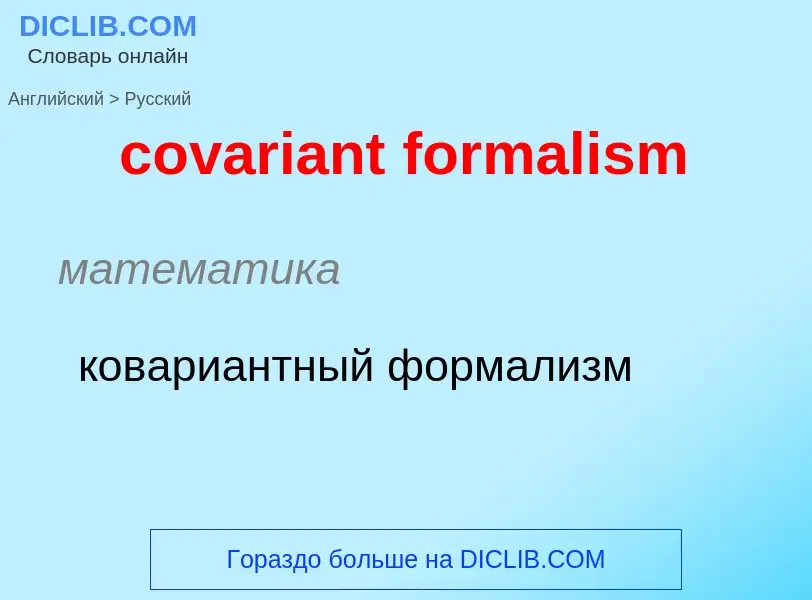Перевод и анализ слов искусственным интеллектом ChatGPT
На этой странице Вы можете получить подробный анализ слова или словосочетания, произведенный с помощью лучшей на сегодняшний день технологии искусственного интеллекта:
- как употребляется слово
- частота употребления
- используется оно чаще в устной или письменной речи
- варианты перевода слова
- примеры употребления (несколько фраз с переводом)
- этимология
covariant formalism - перевод на русский
математика
ковариантный формализм
математика
формальный анализ
Определение
Википедия
In object-oriented programming, a covariant return type of a method is one that can be replaced by a "narrower" type when the method is overridden in a subclass. A notable language in which this is a fairly common paradigm is C++.
C# supports return type covariance as of version 9.0. Covariant return types have been (partially) allowed in the Java language since the release of JDK5.0, so the following example wouldn't compile on a previous release:
More specifically, covariant (wide to narrower) or contravariant (narrow to wider) return type refers to a situation where the return type of the overriding method is changed to a type related to (but different from) the return type of the original overridden method. The relationship between the two covariant return types is usually one which allows substitution of the one type with the other, following the Liskov substitution principle. This usually implies that the return types of the overriding methods will be subtypes of the return type of the overridden method. The above example specifically illustrates such a case. If substitution is not allowed, the return type is invariant and causes a compile error.
Another example of covariance with the help of built in Object and String class of Java:

